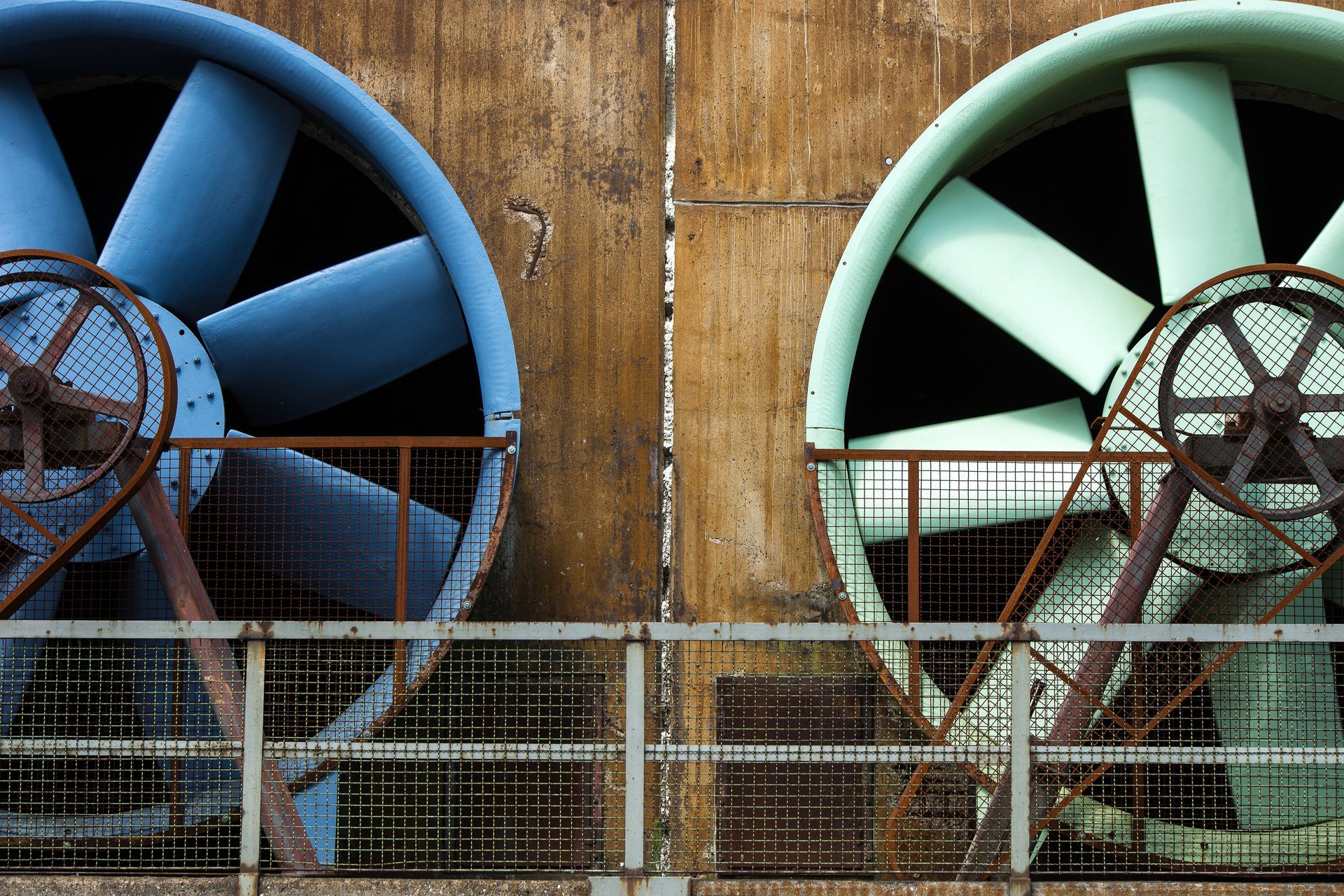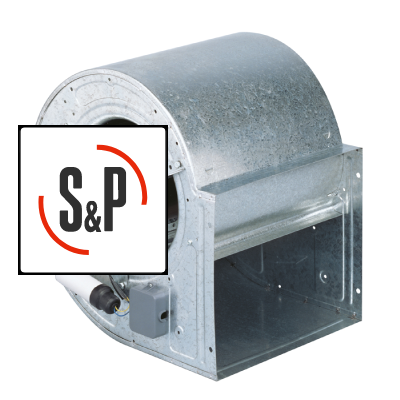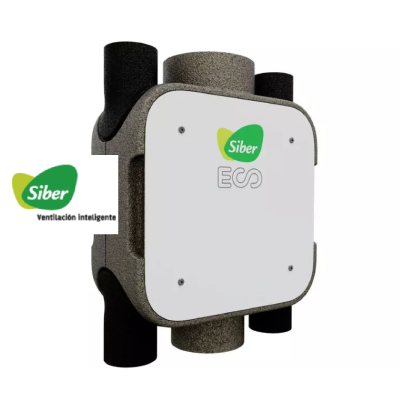
Ventilation systems are designed to move air in and out of a building, ensuring a constant supply of fresh air while removing stale air, pollutants, and excess moisture. In both domestic and industrial environments, proper ventilation is critical for maintaining a comfortable, healthy atmosphere and preventing issues like mold growth, condensation, and poor air quality.
2. Why Ventilation Is Important in Domestic and Industrial Settings
In homes, ventilation systems help manage indoor air quality, temperature, and humidity levels, contributing to overall comfort and health. In industrial settings, ventilation is vital for maintaining safe working conditions by controlling exposure to hazardous substances, removing heat from machinery, and ensuring adequate air circulation.
3. Types of Domestic Ventilation Systems
Exhaust Ventilation Systems
Exhaust ventilation systems work by creating negative pressure inside the building, drawing fresh air in through leaks or vents. These systems are common in bathrooms and kitchens, where they help remove moisture and odors.
Supply Ventilation Systems
Supply ventilation systems force outside air into the building, creating positive pressure that pushes stale air out through leaks or vents. This type of system is ideal for homes in hot or mixed climates, as it allows better control over the air entering the building.
Balanced Ventilation Systems
Balanced ventilation systems use both supply and exhaust fans to bring in fresh air and remove stale air simultaneously. These systems are more energy-efficient and offer better control over indoor air quality compared to exhaust or supply-only systems.
Heat Recovery Ventilation (HRV) Systems
HRV systems are designed to recover heat from the exhaust air and transfer it to the incoming fresh air, reducing energy consumption. This system is particularly beneficial in colder climates where retaining heat is important.
Energy Recovery Ventilation (ERV) Systems
Similar to HRV systems, ERV systems also recover energy from the exhaust air. However, they additionally manage humidity levels, making them ideal for areas with both hot and humid climates.
Whole-House Ventilation Systems
Whole-house ventilation systems are comprehensive setups that provide consistent ventilation throughout the entire home. These systems often combine elements of supply, exhaust, and balanced systems to ensure optimal air quality and comfort.
Attic Ventilation Systems
Attic ventilation systems help regulate temperature and moisture levels in the attic, preventing issues like mold, ice dams, and excessive heat build-up. Proper attic ventilation can also extend the lifespan of your roof.
4. Types of Industrial Ventilation Systems
General Exhaust Ventilation Systems
General exhaust ventilation systems are designed to remove contaminated air from the entire facility. They work by diluting the pollutants with fresh air before exhausting them outside.
Dilution Ventilation Systems
Dilution ventilation systems introduce fresh air into the workplace to dilute airborne contaminants. This type of system is effective for controlling non-toxic fumes, heat, and odors in large, open areas.
Local Exhaust Ventilation (LEV) Systems
LEV systems are specialized systems designed to capture and remove contaminants at their source, such as fumes, dust, or vapors. These systems are essential in industries where workers are exposed to hazardous materials.
Make-Up Air Units (MAUs)
Make-up air units replace the air that is exhausted from a building, ensuring balanced air pressure. These systems are often used in conjunction with exhaust ventilation systems in industrial facilities.
Natural Ventilation Systems
Natural ventilation systems use natural forces, such as wind and temperature differences, to ventilate a building. This type of system is cost-effective and environmentally friendly but may be less reliable in certain climates or for specific industrial needs.
Mechanical Ventilation Systems
Mechanical ventilation systems use fans and ducts to move air in and out of a building. These systems are highly reliable and can be controlled to provide consistent airflow, making them ideal for industrial settings where precise ventilation is required.
Hybrid Ventilation Systems
Hybrid ventilation systems combine natural and mechanical ventilation methods to optimize energy efficiency and air quality. These systems are often used in modern buildings that prioritize sustainability.
5. Key Features to Consider When Buying a Ventilation System
Energy Efficiency
Choose a system that offers high energy efficiency to reduce operational costs and environmental impact. Look for features like heat recovery, variable speed fans, and energy-efficient motors.
Air Quality Improvement
Ensure the system effectively filters out pollutants, allergens, and moisture. Systems with HEPA filters, UV purification, or advanced filtration technology can significantly improve indoor air quality.
Noise Levels
Consider the noise levels of the system, especially in domestic settings. Quieter systems are more suitable for homes, while industrial environments may prioritize power over noise.
System Size and Capacity
Select a system that is appropriately sized for your space. An undersized system won’t effectively ventilate the area, while an oversized system may waste energy.
Installation Requirements
Check the complexity of installation. Some systems, especially industrial ones, may require professional installation and significant modifications to existing structures.
Maintenance Needs
Consider the maintenance requirements of the system. Systems with easy-to-access filters and components can reduce the time and cost of maintenance.
6. How Ventilation Systems Improve Energy Efficiency
Ventilation systems can improve energy efficiency by reducing the need for heating and cooling. Systems like HRV and ERV recover energy from exhaust air, minimizing energy loss and lowering utility bills. Additionally, efficient ventilation can prevent excess moisture, reducing the strain on HVAC systems.
7. The Role of Ventilation in Health and Safety
Proper ventilation is critical for health and safety, especially in industrial environments where workers are exposed to hazardous materials. Effective ventilation systems remove contaminants, control temperature and humidity, and reduce the risk of respiratory problems, allergic reactions, and other health issues.
8. Installation and Maintenance of Ventilation Systems
Installation requirements vary depending on the type of system and the building’s layout. Professional installation is recommended for most systems, especially those in industrial settings. Regular maintenance, such as filter changes and inspections, is essential to keep the system running efficiently and extend its lifespan.
9. Innovative Uses of Ventilation Systems in Modern Architecture
Ventilation systems are increasingly being integrated into modern architecture, with a focus on sustainability and energy efficiency. Innovations include smart ventilation systems that adjust airflow based on real-time data, green roofs that enhance natural ventilation, and hybrid systems that balance mechanical and natural ventilation.
10. Environmental Impact of Ventilation Systems
Ventilation systems can have a significant impact on the environment. Energy-efficient systems reduce greenhouse gas emissions by minimizing energy consumption. Additionally, proper ventilation can prevent indoor pollution, reducing the need for air purification and other energy-intensive solutions.
11. Frequently Asked Questions (FAQs)
Q1: What is the difference between HRV and ERV systems?
A: HRV systems recover heat from exhaust air to warm incoming air, while ERV systems also manage humidity, making them ideal for both hot and humid climates.
Q2: How often should ventilation systems be maintained?
A: It’s recommended to check and replace filters every 3-6 months and have the entire system inspected annually.
Q3: Can I install a ventilation system myself?
A: While some smaller systems may be DIY-friendly, most ventilation systems, especially industrial ones, require professional installation.
Q4: What are the benefits of a whole-house ventilation system?
A: Whole-house ventilation systems provide consistent air quality throughout the home, improve energy efficiency, and reduce the risk of moisture-related problems.
Q5: Are natural ventilation systems effective in all climates?
A: Natural ventilation systems are most effective in moderate climates but may not provide sufficient airflow in extreme weather conditions or highly polluted areas.
Q6: How do ventilation systems contribute to energy savings?
A: Ventilation systems like HRV and ERV reduce energy loss by recovering heat from exhaust air, leading to lower heating
SALE OF DOMESTIC AND INDUSTRIAL VENTILATION SYSTEMS








